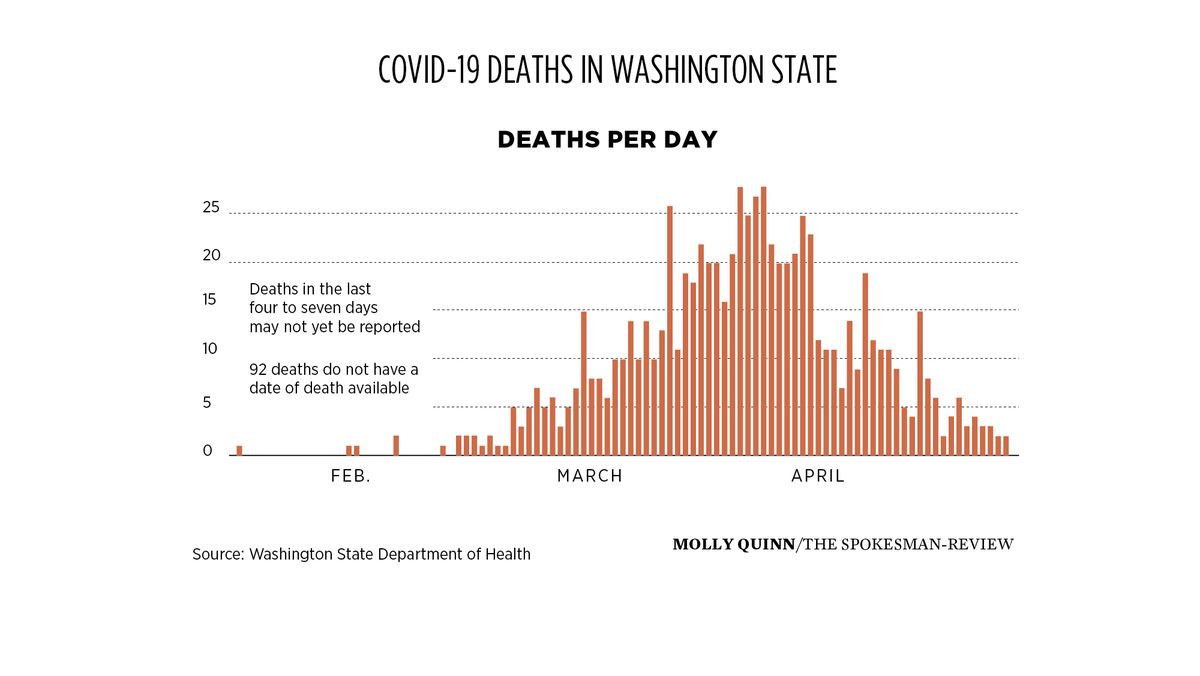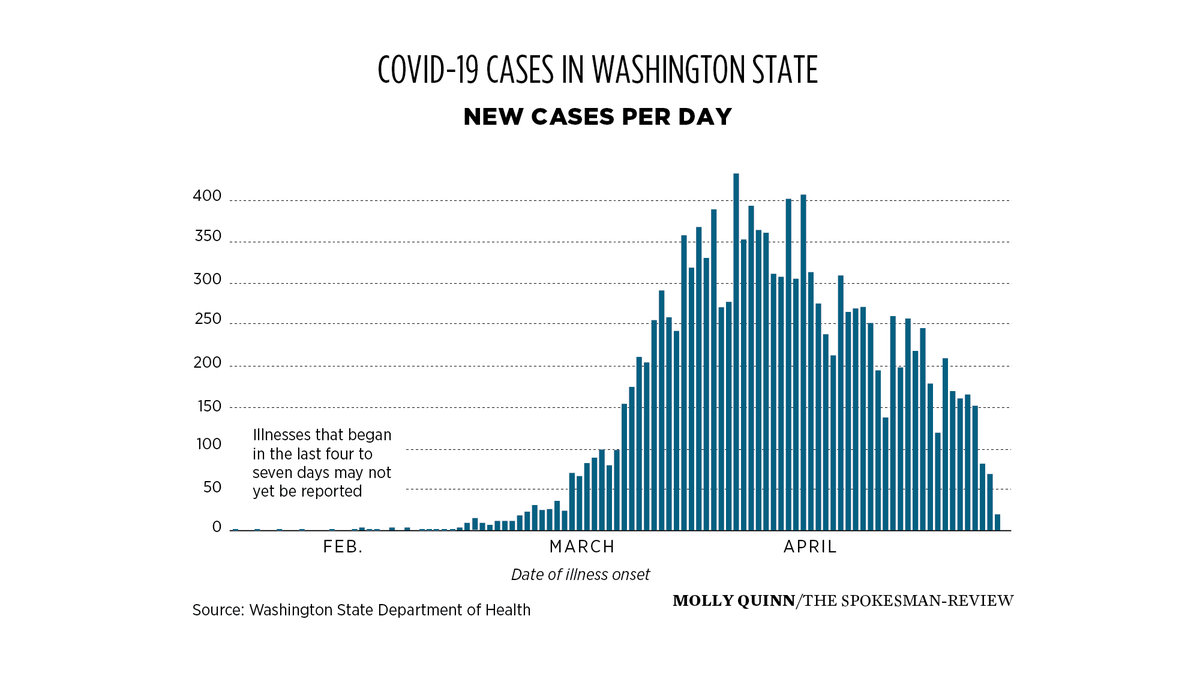Inslee offers peek into data used to decide whether to reopen businesses and services across the state
OLYMPIA – Although he can’t say when more businesses will be able to reopen and the stay-home order will be lifted, Gov. Jay Inslee offered a more comprehensive look Wednesday at what state health experts are studying to make those decisions.
“There is no one number that is the magic number,” Inslee said as he described many types of data that include the daily number of new COVID-19 cases, hospitalizations and deaths from the disease and the number of other people infected by a newly infected patient.
State officials are also looking at the number of tests that can be performed, which is currently greater than the equipment available to analyze those tests, the medical supplies available and the number of hospital beds available to handle a “surge” of COVID-19 cases.
Inslee went through the data after saying he will extend the stay-home order beyond Monday – with a few changes.
He announced a proclamation that relaxes the restriction on certain medical procedures put in place when the pandemic began to take hold in Washington last month. The supplies of personal protective equipment needed for hospital staff treating COVID-19 cases are now large enough that some elective or “nonurgent” medical procedures can resume.
Medical professionals will be able to assess the harm of a patient’s illness or injury and weigh it against the risk of doing the surgery or procedure during the pandemic.
Doctors, dentists and other health care professionals should consider factors, the order says, including how the disease might progress, whether a delay would complicate a future surgery or treatment, or cause the patient’s condition to deteriorate. They also should consider whether significant pain would continue and whether leaving the patient’s condition untreated would leave them more vulnerable to COVID-19.
In the last week the state has allowed some residential and commercial construction to resume. The state also is allowing residents to resume some outdoor recreation including fishing, hunting and golf, with new requirements for social distancing.
Inslee threw cold water on any thoughts by school officials of bringing students back to the classroom for a few weeks at the end of the school year, as President Donald Trump suggested earlier in the week. The state doesn’t have the equipment for rapid testing needed to reopen schools and face the prospect of a student coming to class with the symptoms of the disease, possibly infecting others and having to determine whether that school needed to be shut down again.
“With the information we have today, we don’t see that as an option,” he said. “In the absence of that (testing materials) I don’t think it probably is in the cards.”
He did, however, hold out the prospect that some areas of the state with better data could resume business activities sooner than others, as local government and business leaders are urging.
Spokane County commissioners sent Inslee a letter Wednesday noting that the county’s infection and death rates have been below early predictions and low in the last two weeks.
“Spokane County has not seen the high infection and death rates as some other counties in our state and, therefore, should be allowed to reopen much sooner than counties that have been more heavily impacted,” commissioners wrote.
Although he didn’t address Spokane or any particular area of the state, Inslee said state officials are studying the prospect of allowing a regional approach to reopening businesses.
“There is consideration being given to having somewhat earlier dates to start some of these next steps,” he said. “It’s something we’re continuing to look at the data about.”
But it’s clear the commissioner’s request to open some Spokane businesses “immediately” won’t happen. The restrictions will be lifted in phases, he said. He can’t set specific dates for removing them but will announce Friday how it can be done.
The array of data health officials are analyzing is complex, based on a series of charts and graphs Inslee and others highlighted in an hourlong presentation and news conference. Under constant analysis are:
- Disease activity, which includes data on COVID-19 infections, hospitalizations and deaths; the rate the disease is spreading from one person to others; and how physical distancing is being followed.
- Readiness of the health care system, measured by hospital beds, intensive care unit capacity, ventilator numbers and personal protective equipment supplies.
- Testing capability for everyone with symptoms and those with high-risk exposures, including the number of tests per day and the supplies needed for testing.
- Contact investigations with a statewide force to be able to identify and isolate those who have the disease, and facilities to isolate and quarantine them. The state expects to have 1,500 “contact tracers” trained and available by mid-May.
- Risk to vulnerable populations, including the number of outbreaks in long-term care facilities and data on the demographics of the people who contract the disease and those who die from it.
Wednesday was the 100th day since the first case of COVID-19 was identified in Washington. Although the state has made progress in fighting the disease, Inslee warned against lifting restrictions too soon and having the virus return.
“Let’s just do this once and get it over with,” he said. “Let’s do it 100% one time, rather than 90% twice.”

